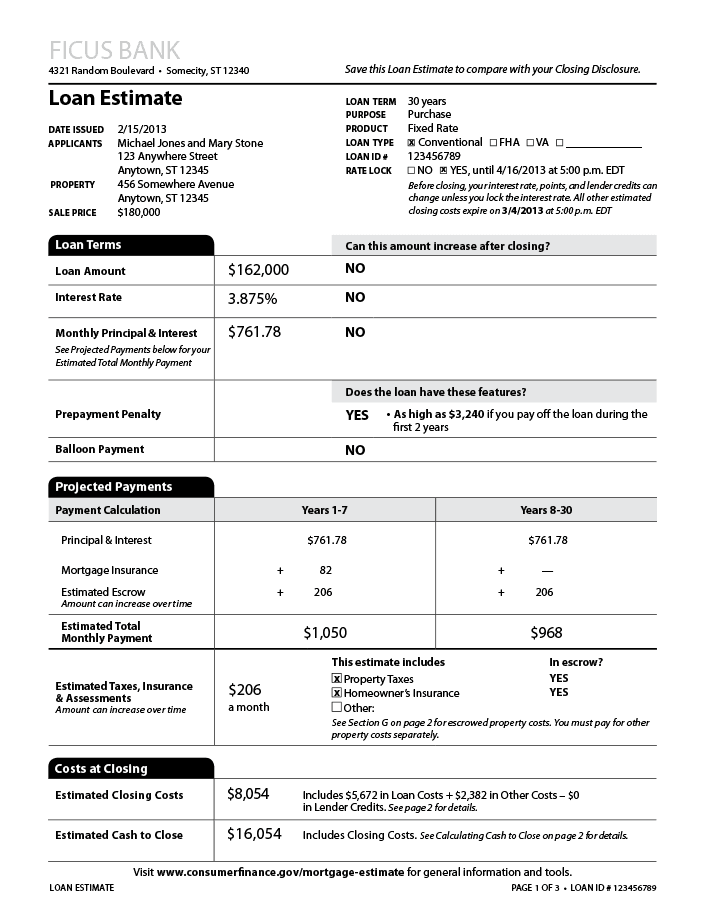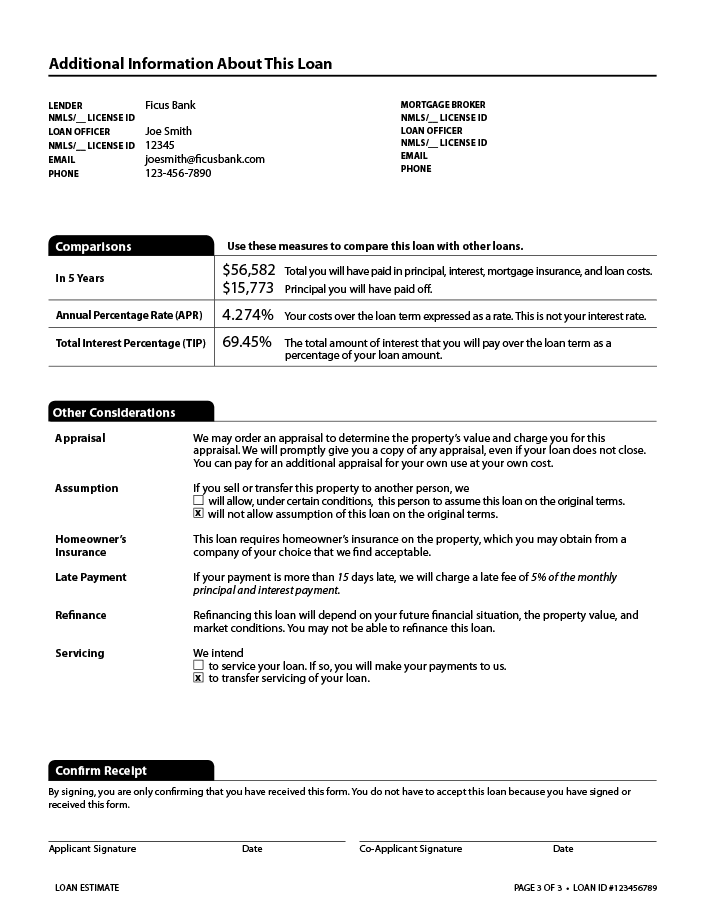Loan Estimate Explainer
A Loan Estimate tells you important details about a mortgage loan you have requested. Use this tool to review your Loan Estimate to make sure it reflects what you discussed with the lender. If something looks different from what you expected, ask why. Request multiple Loan Estimates from different lenders so you can compare and choose the loan that's right for you.
How to use the tool to review your Loan Estimate: Below you'll see the actions you should take to review your Loan Estimate and some handy definitions to know when you do.
The sample Loan Estimate shows you where you'll find information on your own form. When you select any of the items on the Loan Estimate, the tool highlights the information on the image and also highlights the explanation. You can download the sample Loan Estimate if you'd like to print it or just get a better look.
Sample Loan Estimate
 Check the spelling of your name
Check loan term, purpose, product, and loan type
Check that the loan amount is what you are expecting
Understand your monthly principal & interest
Are there additional charges are included in your payment?
Does your Estimated Total Monthly Payment match your expectations?
Do you have items in Estimated Taxes, Insurance & Assessments that are not escrowed?
What are your estimated closing costs?
Do you have enough cash on hand to pay your Estimated Cash to Close?
Rate lock
Fixed and adjustable interest rates
Prepayment penalty
Balloon payment
Monthly Principal & Interest
Mortgage insurance
Check the spelling of your name
Check loan term, purpose, product, and loan type
Check that the loan amount is what you are expecting
Understand your monthly principal & interest
Are there additional charges are included in your payment?
Does your Estimated Total Monthly Payment match your expectations?
Do you have items in Estimated Taxes, Insurance & Assessments that are not escrowed?
What are your estimated closing costs?
Do you have enough cash on hand to pay your Estimated Cash to Close?
Rate lock
Fixed and adjustable interest rates
Prepayment penalty
Balloon payment
Monthly Principal & Interest
Mortgage insurance
 Compare the Origination Charges to Loan Estimates from other lenders
Compare the Services You Cannot Shop For to Loan Estimates from other lenders
Review the Services You Can Shop For and shop for these services
Why are other costs listed?
Is the homeowner’s insurance premium accurate?
Are the property taxes accurate?
Does your loan include lender credits?
Is the Estimated Cash to Close what you were expecting?
Points
Compare the Origination Charges to Loan Estimates from other lenders
Compare the Services You Cannot Shop For to Loan Estimates from other lenders
Review the Services You Can Shop For and shop for these services
Why are other costs listed?
Is the homeowner’s insurance premium accurate?
Are the property taxes accurate?
Does your loan include lender credits?
Is the Estimated Cash to Close what you were expecting?
Points

